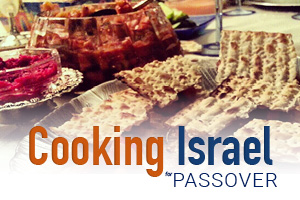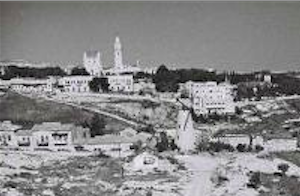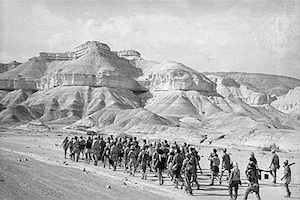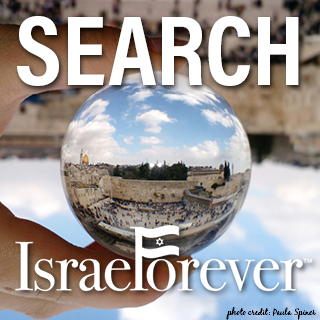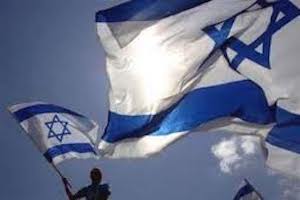Passover in Palestine
Memories of Seders in an Israel on the Cusp of Statehood
By Jessica Steinberg
On the eve of Passover 1948, Rabbi Moshe Saks, known as Bud to his family and friends, was stationed in Jerusalem's Talpiot neighborhood, trying to figure out how to get Passover supplies and ammunition to the embattled Haganah soldiers in the Makor Haim neighborhood.
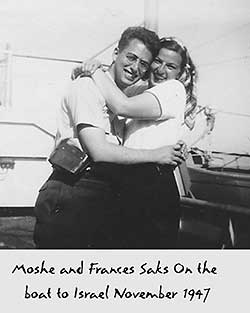
A rabbi from Baltimore who had served as a chaplain for two years in the U.S. Army during World War II, Saks arrived in Palestine in November 1947, with his wife, Frances. He planned to study for a doctorate at Hebrew University under the G.I. Bill. When the War of Independence broke out later that month, he instead became a quasi-social worker and chaplain for the fledgling Haganah military organization.
"It was a time when the very existence of the Zionist movement was in doubt," says Saks, now 87 and living in the German Colony neighborhood of Jerusalem, his home since 1974. "But it was also a period when people felt they ought to be here. As for me, there was no model in which to think of this task the Haganah had given me. But they wanted me to go from place to place and talk to people."

Makor Haim was the frontline of defense for southwest Jewish Jerusalem, as it was surrounded by large Arab villages and far from the city's other Jewish neighborhoods. Saks had been involved in sending a convoy of supplies from Talpiot to Makor Haim, but the British Army turned back the convoy. As part of his responsibilities, Saks was told by his superiors to prepare a seder for the remaining members of the community and soldiers stationed in Talpiot.
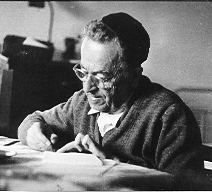
Several days before the holiday began, Saks and his wife came across Shmuel Yosef Agnon, or S.Y. Agnon, the Hebrew fiction writer who had been living in Talpiot since 1924 and continued to do so, in defiance of the British. Agnon was in his yard, trying to uproot a tree with some help from a neighbor. On the spur of the moment, Saks asked him to lead the seder that would be held at HaYozem, the local pensione that was functioning as the Haganah's headquarters in Talpiot.
Agnon, the celebrated novelist, didn't have "the feel for leading a group of young people in a seder, and his Hebrew wasn't as beautiful as that of the young man from the Old City who led the second shift," Saks says. "But he was such an important role model and writer."
There also wasn't much in the way of food or matzah either, Saks remembers. Given the siege of Jerusalem that had begun in December 1947, and lasted until July 1948, the mayor of Jerusalem, Dov Yosef, had instituted a rationing program intended to save the city. For Passover, however, a convoy made it through carrying Passover supplies, and a special ration was instituted for families, including 2 pounds of potatoes, half a pound of fish, 4 pounds of matzah, 1.5 ounces of dried fruit, half a pound of meat and half a pound of matzah flour.
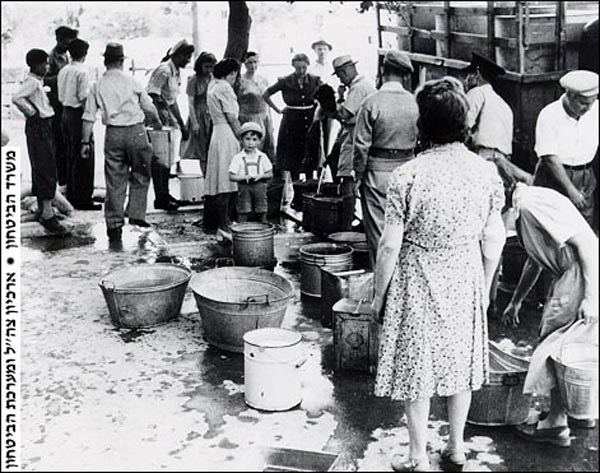
As Zipporah Borowsky, another young American who had arrived in Palestine in 1947, wrote in a letter to her parents in New York: "In a way, I am lucky, not having to wait in the long lines for the meager rations of meat and fish that are being distributed to the heads of families. But, we did get a small ration of potatoes, margarine and wine, and, with all the stuff I've been saving from packages you've sent, I should be fairly well-stocked for the entire holiday."
For Danny Angel, now 79, whose family's bakery eventually became the largest in Israel, what stands out from that particular Passover was the fact that there were no eggs or vegetables.
"We lived in Bayit Vegan, and we went into the fields nearby to pick marrow, to serve as the green on our seder plate," says Angel, who was 19 and a Haganah soldier in Jerusalem throughout the entire war.
It was a difficult Passover, Saks remembers. A leading Haganah soldier was killed in Makor Haim on the eve of Passover, adding to "the mood of the seder; it was a very painful experience," he said.
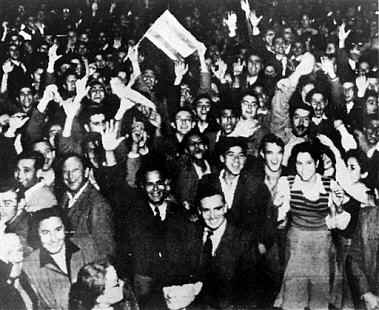
Within weeks, of course, times had changed, and the establishment of the state of Israel was declared on May 14, 1948. In November 1948, the Saks' had their first child, Noam, and returned to the States in 1949 until their aliyah 25 years later. Tzipporah Borowsky returned to the U.S. briefly as executive assistant to the Israeli consul general in New York, and later married Joseph Porath, then Israel's assistant military attache, returning to live in Israel, where "the Passover seder in our home was very much Israeli style, with an American accent."
For Saks, and his son, Noam Zion, who has lived in Israel since 1973 and raised his own family in Talpiot, Passover has always been a holiday of tremendous ritual and historical importance.
Read the original article here.

